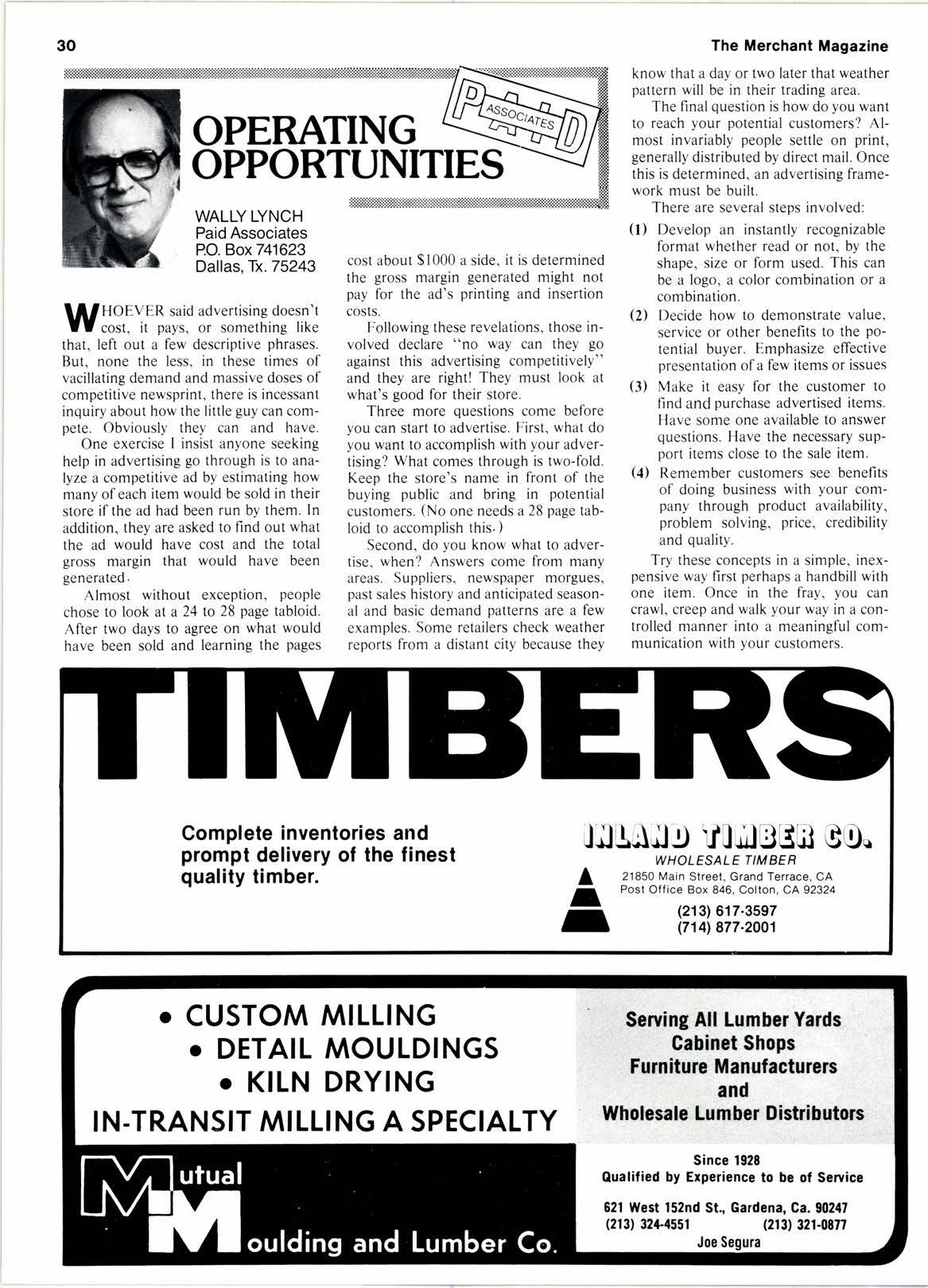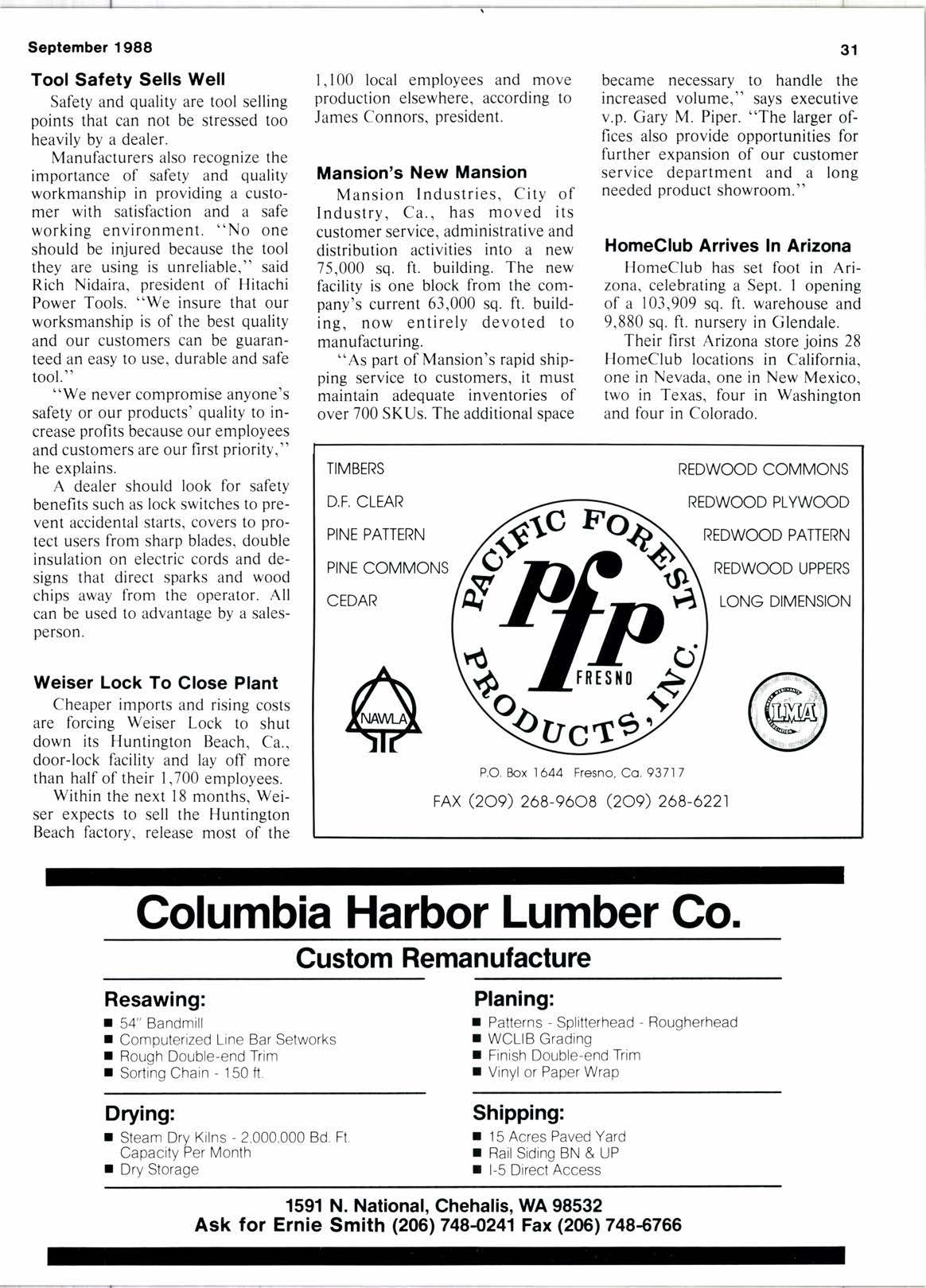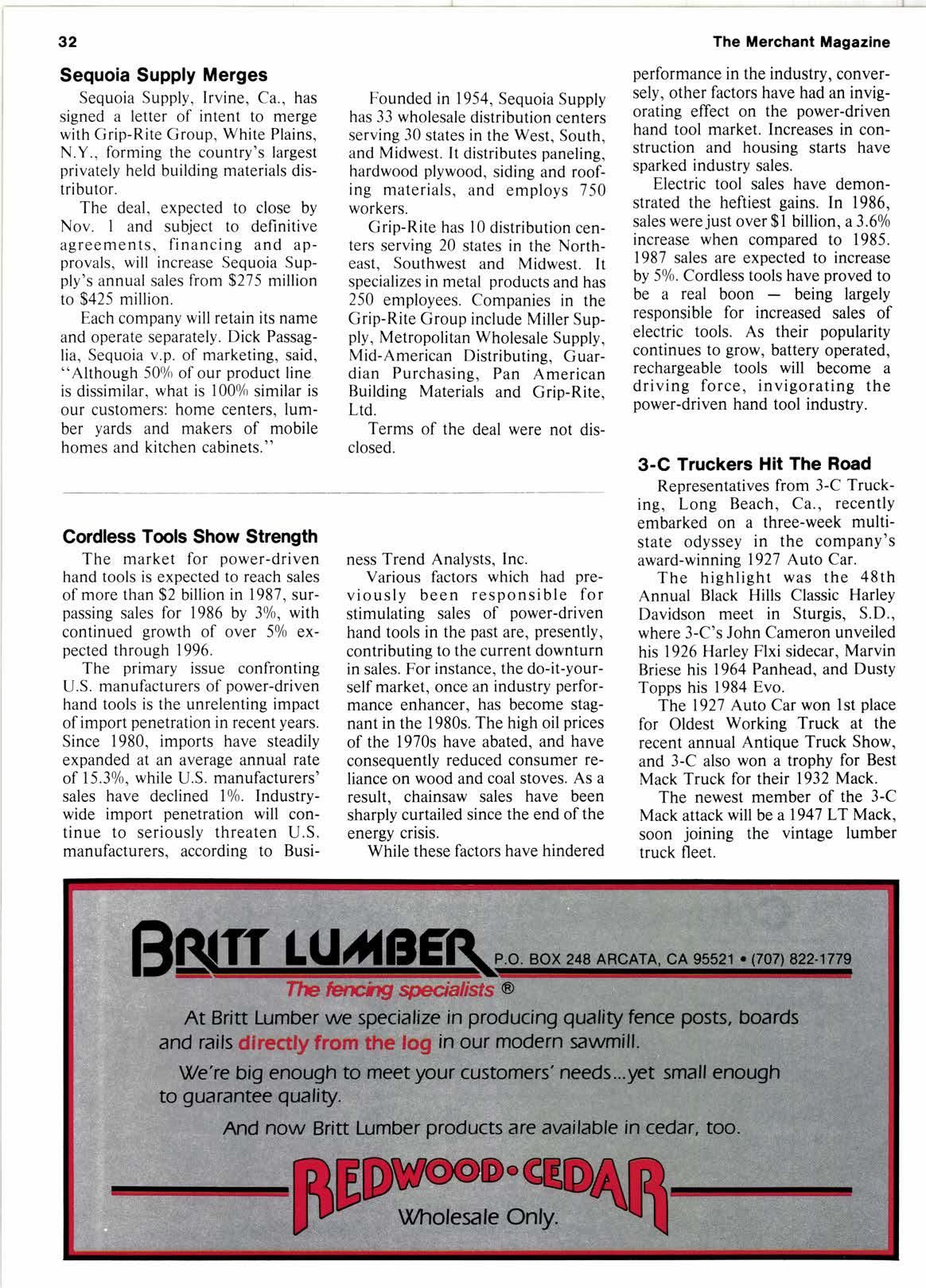
6 minute read
OPERATING OPPORTUNITIES
WALLY LYNCH Paid Associates PO. Box 741623 Dallas. fx.75243
!f,fUOeveR said advertising doesn't ll cost, it pays, or something like that, left out a few descriptive phrases. But, none the less, in these times of vacillating demand and massive doses of competitive newsprint, there is incessant inquiry about how the little guy can compete. Obviously they can and have.
One exercise I insist anyone seeking help in advertising go through is to analyze a competitive ad by estimating how many of each item would be sold in their store if the ad had been run by them. In addition, they are asked to find out what the ad would have cost and the total gross margin that would have been generated.
Almost without exception, people chose to look at a 24 to 28 page tabloid. After two days to agree on what would have been sold and learning the pages cost about $1000 a side, it is determined the gross margin generated might not pay for the ad's printing and insertion costs.
Following these revelations, those involved declare "no way can they go against this advertising competitively" and they are right! They must look at what's good for their store.
Three more questions come belore you can start to advertise. First, what do you want to accomplish with your advertising? What comes through is two-lold. Keep the store's name in front of the buying public and bring in potential customers. (No one needs a 28 page tabloid to accomplish this. )
Second, do you know what to advertise, when? Answers come from many areas. Suppliers, newspaper morgues, past sales history and anticipated seasonal and basic demand patterns are a few examples. Some retailers check weather reports from a distant city because they know that a day or two later that weather pattern will be in their trading area.
The final question is how do you want to reach your potential customers? Almost invariably people settle on print, generally distributed by direct mail. Once this is determined, an advertising framework must be built.
There are several steos involved:
(1) Develop an instantly recognizable format whether read or not, by the shape, size or form used. This can be a logo, a color combination or a combination.
(2) Decide how to demonstrate value, service or other benefits to the potential buyer. Emphasize effective presentation of a lew items or issues
(3) Make it easy for the customer to find and purchase advertised items. Have some one available to answer questions. Have the necessary support items close to the sale item.
(4) Remember customers see benefits of doing business with your company through product availability, problem solving, price, credibility and quality.
Try these concepts in a simple, inexpensive way first perhaps a handbill with one item. Once in the fray, you can crawl, creep and walk your way in a controlled manner into a meaningful communication with your customers.
Tool Safety Sells Well
Safety and quality are tool selling points that can not be stressed too heavily by a dealer.
Manufacturers also recognize the importance of safety and quality workmanship in providing a customer with satisfaction and a safe working environment. "No one should be injured because the tool they are using is unreliable," said Rich Nidaira, president of Hitachi Power Tools. "We insure that our worksmanship is of the best quality and our customers can be guaranteed an easy to use, durable and safe tool."
"We never compromise anyone's safety or our products' quality to increase profits because our employees and customers are our first priority," he explains.
A dealer should look for safety benefits such as lock switches to prevent accidental starts, covers to protect users from sharp blades, double insulation on electric cords and designs that direct sparks and wood chips away from the operator. All can be used to advantage by a salesperson.
Weiser Lock To Close Plant
Cheaper imports and rising costs are forcing Weiser Lock to shut down its Huntington Beach, Ca., door-lock facility and lay off more than half of their 1,700 employees.
Within the next 18 months, Weiser expects to sell the Huntington Beach factory, release most of the
1,100 local employees and move production elsewhere, according to James Connors, president.
Mansion's New Mansion
Mansion Industries, City of Industry, Ca., has moved its customer service, administrative and distribution activities into a new 75,000 sq. ft. building. The new facility is one block from the company's current 63,000 sq. ft. building, now entirely devoted to manufacturing.
"As part of Mansion's rapid shipping service to customers, it must maintain adequate inventories of over 700 SKUs. The additional space
TIMBERS
D.F. CLEAR
PINE PATTERN
PINE COMMONS CEDAR became necessary to handle the increased volume," says executive v.p. Gary M. Piper. "The larger offices also provide opportunities for further expansion of our customer service department and a long needed product showroom."

HomeClub Arrives In Arizona
HomeClub has set foot in Arizona, celebrating a Sept. 1 opening of a 103,909 sq. ft. warehouse and 9,880 sq. ft. nursery in Glendale. Their first Arizona store joins 28 HomeClub locations in California, one in Nevada, one in New Mexico, two in Texas, four in Washington and four in Colorado.
REDWOOD COMMONS
REDWOOD PLYWOOD
REDWOOD PATTERN
REDWOOD UPPERS
LONG DIMENSION
Resawing: r 54" Bandmill r Sorting Chain - 150 ft
Drying: r Drv Storaoe
Planing: r Patterns - Splitterhead - Rougherhead
Sequoia Supply Merges
Sequoia Suppl-'". lrvine. Ca., has signed a letter of intent to merge with (irip-Ritc (iroup. White Plains, N.Y.. forming the country's largest privately hclcl builcling materials distributor.
The deal. expectecl to close by Nov. I and sub.icct to dcf initive agreenrents. financing and approvals. will increasc Sequoia Supply's annual sales lrom $27-5 million to 5425 million.
Flrch conrplnr u ill retain its name and operate separatell. I)rck Passaglia, Sequoia v.p. of marketing, said. "Although 50%' olour product line is dissimilar. rvhat is 100(h similar is our customers: home centers. lumber yards and makers of mobile homes and kitchen cabinets."
Cordless Tools Show Strength
The market for power-driven hand tools is expected to reach sales of more than $2 billion in 1987. surpassing sales lor 1986 by 3(lr, with continued growth of over 5(h expected through 1996.
The primary issue confronting [.1.S. manufacturers ol power-driven hirnd tools is lhe unrelenting impact of import penetration in recent years. Since 1980. rmports have steadily expanded at an average annual rate of 15.3%. while U.S. manufacturers' sales have declined 101r. Industrywide import penetration will continue to seriously threaten U.S. manufacturers, according to Busi-
Irounded in 1954, Sequoia Supply hrrs .l.l wholesale distribution cenlers serving 30 states in the West, South. and Miclwcst. It distributes paneling, hardwood plywood. siding and roofing matcrials, and cmploys 7-50 workcrs.

(irip-llite has l0 distribution centers scrving 20 states rn the Northcast. Southwest and Midwest. It specializes in metal products and has 2-50 employees. Companies in the (irip-Rite Group include Miller Supply, Metropolitan Wholesale Supply. Mid-American Distributing, Guardian Purchasing. Pan American Building Materials and Grip-Rite, Ltd.
Terms of closed. the deal were not dis- performance in the industry, conversely, other factors have had an invigorating effect on the power-driven hund tool markel. Increases in construction and housing starts have sparked industry sales.
Electric tool sales have demonstrated the heftiest gains. In 1986, sales were just over $l billion, a 3.60i increase when compared to 1985. 1987 sales are expected to increase by 5(%. Cordless tools have proved to be a real boon being largely responsible for increased sales of electric tools. As their popularity continues to grow, battery operated, rechargeable tools will become a driving force, invigorating the power-driven hand tool industry.
3-C Truckers Hat The Road
ness Trend Analysts, lnc.
Various factors which had previously been responsible f'or stimulating sales of power-driven hand tools in the past are, presently, contributing to the current downturn in sales. F-or instance. the do-it-yourself market, once an industry performance enhancer, has become stagnant in the 1980s. The high oil prices of the 1970s have abated. and have consequently reduced consumer reliance on wood and coal stoves. As a result, chainsaw sales have been sharply curtailed since the end of the energy crisis.
While these factors have hindered
Representatives from 3-C Trucking, Long Beach, Ca., recently embarked on a three-week multistate odyssey in the companY's award-winning 1927 Auto Car.
The highlight was the 48th Annual Black Hills Classic Harley [)avidson meet in Sturgis, S.D., where 3-C's John C'ameron unveiled his 1926 Harley Flxi sidecar, Marvin Briese his 1964 Panhead, and Dusty Topps his 1984 Evo.
The 1921 Auto Car won lst place for Oldest Working Truck at the recent annual Antique Truck Show, and 3-C also won a trophy for Best Mack Truck for their 1932 Mack.
The newest member of the 3-C Mack attack will be a 7947 LT Mack, soon joining the vintage lumber truck fleet.
Meets










